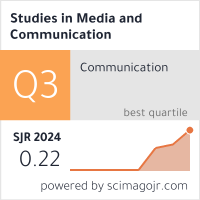Processing Color in Astronomical Imagery
Abstract
Every year, hundreds of images from telescopes on the ground and in space are released to the public, making their way into popular culture through everything from computer screens to postage stamps.
Most astronomical images are natively digital, with their data traveling from telescopes to scientists as a series of ones and zeroes and with tens and even hundreds of terabytes of data available from a single observatory archive (Brunner, 2001). These data span the entire electromagnetic spectrum from radio waves to infrared light to X-rays and gamma rays – a majority of which is undetectable to the human eye without technology. Once these data are collected, one or more specialists (scientists and other professionals) must process the data to create an image. Therefore, the creation of astronomical imagery involves a series of choices. How do these choices affect the comprehension of the science behind the images? What is the best way to represent data to a non-expert? Should these choices be based on aesthetics, scientific veracity, or is it possible to satisfy both?
This paper reviews just one choice out of the many made by astronomical image processors: color. The choice of color is one of the most fundamental when creating an image taken with modern telescopes. We briefly explore the concept of the image as translation, particularly in the case of astronomical images from invisible portions of the electromagnetic spectrum. After placing modern astronomical imagery and photography in general in the context of its historical beginnings, we review the standards (or lack thereof) in making the basic choice of color. We discuss the possible implications for selecting one color palette over another in the context of the appropriateness of using these images as science communication products with a specific focus on how the non-expert perceives these images and how that affects their trust in science. Finally, we share new data sets that begin to look at these issues in scholarly research and discuss the need for a more robust examination of this and other related topics in the future to better understand the implications for science communications.
Full Text:
PDFDOI: https://doi.org/10.11114/smc.v1i2.198
Refbacks
- There are currently no refbacks.
Studies in Media and Communication ISSN 2325-8071 (Print) ISSN 2325-808X (Online)
Copyright © Redfame Publishing Inc.
To make sure that you can receive messages from us, please add the 'redfame.com' domain to your e-mail 'safe list'. If you do not receive e-mail in your 'inbox', check your 'bulk mail' or 'junk mail' folders.
If you have any questions, please contact: smc@redfame.com
------------------------------------------------------------------------------------------------------------------------------------------------------

